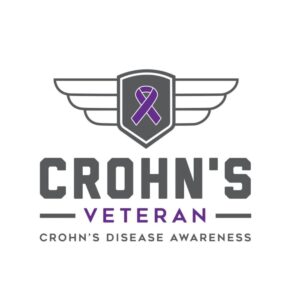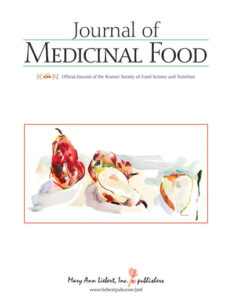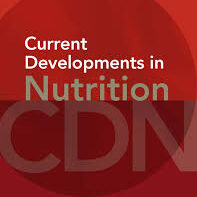Can You Eat Salad with Crohn’s Disease?
Danielle Gaffen, MS, RDN, LD
- Last Updated
Are you wondering if you can eat salad with Crohn’s disease? As you probably know, it’s rarely a one-size-fits-all with IBD. So we’re here to tell you that colorful fruits and vegetables have a place in your health, and to take a deeper dive.
Co-written by Renata Cauchon-Robles
Many people have questions about what foods to include and what foods to avoid with IBD. What you eat, or your diet, is considered one of the external or environmental factors that can trigger IBD symptoms and inflammation in the gut. Thankfully, what we eat can also help relieve symptoms.
This article will go into detail about a common food we hear about a lot– salad. You’ll learn about key things to consider related to fiber and Crohn’s disease, and what vegetables to keep on your plate throughout your IBD journey. When you’re trying to decide how to eat with IBD, it isn’t one size fits all. We recommend you make choices based on where you are in your healing journey and what symptoms you are currently dealing with.
What Vegetables in Salad Should be Avoided with Crohn’s Disease?
Everyone’s IBD journey is a little different. And some foods can play an important role in your healing, while others might be something you eat less often. Sometimes your focus may need to be more on intestinal healing, and other times on feeding the microbiome. This could mean that you occasionally limit certain vegetables or types of foods that tend to trigger your symptoms.
In terms of vegetables, we recommend you make choices around what type of fiber you’re getting from different vegetables. Luckily, vegetables have a mix of two types of fiber, soluble or insoluble, which your intestines treat differently. This means you can make food choices that support you and don’t work against you.
Insoluble or Soluble Fiber for IBD, Which Do I Choose?
Eating more fiber can help you have longer stretches of time without symptoms. But did you know there are different types of fiber, and that they behave differently in the body?
Soluble Fiber
Vegetables with more soluble fiber, like carrots or zucchini, can help gel together stools and keep them soft to pass. Soluble fiber found in broccoli has even been found to help prevent relapse in Crohn’s disease. This type of fiber feeds the bacteria that makes up your microbiome. The bacteria in your gut work hard to keep your digestion healthy, so it’s a great idea to keep them happy and fed, too!
Insoluble Fiber
On the other hand, vegetables with more insoluble fiber, like okra or sweet potatoes, play a bigger role in keeping your bowels moving. When your intestinal tissue needs healing, insoluble fiber can sometimes be a little harder on your system.
If you are experiencing a stricture, blockage, or obstruction, you may need to be careful with how much fiber you are eating, especially insoluble fiber. Ask your healthcare team and dietitian who specializes in IBD for individualized fiber recommendations if you have these complications or are following a therapeutic diet plan such as the Specific Carbohydrate Diet, Gluten Free or other diet plans that restrict certain foods.
What are the Best Salads for Crohn’s Disease?
Salads can be made of a lot of different things, full of all kinds of different toppings, and topped with a variety of different types of dressings. An important part of the conversation is what role salad is playing in your overall diet. If eating salad more often helps you incorporate more plant foods then it’s a great way to support an IBD-friendly diet.
Common Toppings to Examine
There isn’t one type of salad that is better than any other, but below we will highlight some ingredients commonly found in salads and salad mixes:
- Spinach and other green leafy foods are a great source of carotenoids, a type of antioxidant that can support the structure and strength of your intestines.
- Peeled carrots are high in soluble fiber and having them shredded can help you digest them even better.
- Nuts help add healthy fats but may be harder to digest at times. Try small amounts of walnuts which are higher in omega-3 fats.
Your tolerance for other common salad toppings like tomatoes and raisins might differ depending on your symptoms and level of inflammation, like if you are following specific diet plans like IBD Anti-Inflammatory diet or the Crohn’s Disease Exclusion Diet.
And don’t forget, fruits go really well when added to salads, too! Try sliced strawberries or peeled apples for some refreshing flavor and additional color to your next salad.
Other Tips to Make Salad Part of an IBD-Friendly Menu
- Textures make a difference in how you digest food. When your IBD symptoms are giving you a harder time, consider shredded and peeled ingredients in your meals. For salads, that could look like shredded carrots, peeled cucumbers or peeled apple slices.
- Chewing your food completely helps prepare your digestive tract for what’s coming. You might notice symptoms decrease when you take the time to chew 20-30 times before swallowing.
- Portion sizes can also change how a specific food triggers your symptoms. If you notice a certain vegetable or type of salad makes you feel uncomfortable, try a smaller portion next time. This can be a way to include it in a meal so you still get the nutrient benefits.

Is Iceberg Lettuce Okay for Crohn’s?
In general, iceberg lettuce is considered less nutritious than darker green leafy options like spinach, romaine, arugula, or kale. However, it has a good water content that can help with hydration. It can also be mellow for your digestion since it’s lower in fiber.
On the other hand, leafy greens like spinach have shown some positive benefits in restoring the intestinal lining which can often be thinned or damaged with IBD. Some research has shown IBD benefits from chlorophyll, the thing that gives vegetables and plants their green color.
That said, leafy greens are more easily fermented in the gut, which during a flare or in early stages of remission may aggravate symptoms.
What are the Best Salad Dressings for Crohn’s Disease?
Homemade or store-bought dressings vary tremendously in their ingredients. Just like salad, there is not one dressing that wins a gold star. Here are a few dressing ingredients you can consider for your next choice of dressing:
- Olive oil-based dressings provide antioxidant and anti-inflammatory benefits.
- Vinegar has been shown to help with digestion, potentially decrease inflammation and provide antifungal benefits.
- Many pre-prepared bottled salad dressings contain emulsifiers and other ingredients that may trigger IBD symptoms for some people. Pay attention to how your body responds.
Are Vegetables Anti-inflammatory?
Inflammation is one of the most known characteristics of Crohn’s and Colitis. This is why, if you are someone living with IBD, you likely get a lot of recommendations for eating anti-inflammatory foods.
In the typical Western diet, vegetables have taken a back seat. This fact, and the tendency for more processed and modified foods has decreased how much fiber is available in the average American diet.
But it’s important to know that vegetables (and therefore salads) have that beneficial fiber.
Research has shown that when fiber is fermented in the intestines, it can help control how inflammation is triggered in the body. Having anti-inflammatory foods within an otherwise balanced diet is a great way to support your gut health and digestion.
Take Home Message
With IBD and Crohn’s disease, one of the most common food recommendations is to choose anti-inflammatory foods. These can help prevent symptoms and help manage symptoms when you are trying to find relief.
Multi-colored vegetables and fruits available in salads are a great option to include in a balanced diet. Pay attention to how you feel when you eat certain foods and get creative to adjust the texture or portion to help prevent those uncomfortable symptoms.
Learn More
- Get familiar with both soluble and insoluble fiber in foods
- Explore this free IBD Masterclass for tips on food choices and hydration
- You don’t have to figure this out alone. Work with us at Eat Well Crohn’s & Colitis for individualized nutrition coaching to help you feel better.
References
- Reddavide R, Rotolo O, Caruso MG, et al. The role of diet in the prevention and treatment of Inflammatory Bowel Diseases. Acta Biomed. 2018;89(9-S):60-75. Published 2018 Dec 17. doi:10.23750/abm.v89i9-S.7952
- PGDip SOM. Top 20 foods High in Soluble Fiber. Healthline. Published January 11, 2024. https://www.healthline.com/nutrition/foods-high-in-soluble-fiber#fruits
- Ananthakrishnan AN, Khalili H, Konijeti GG, et al. A prospective study of long-term intake of dietary fiber and risk of Crohn’s disease and ulcerative colitis. Gastroenterology. 2013;145(5):970-977. doi:10.1053/j.gastro.2013.07.050
- Serrano Fernandez V, Seldas Palomino M, Laredo-Aguilera JA, Pozuelo-Carrascosa DP, Carmona-Torres JM. High-Fiber Diet and Crohn’s Disease: Systematic Review and Meta-Analysis. Nutrients. 2023; 15(14):3114. https://doi.org/10.3390/nu15143114
- Wellens J, Vermeire S, Sabino J. Let Food Be Thy Medicine-Its Role in Crohn’s Disease. Nutrients. 2021;13(3):832. Published 2021 Mar 3. doi:10.3390/nu13030832
- Limketkai BN, Hamideh M, Shah R, Sauk JS, Jaffe N. Dietary Patterns and Their Association With Symptoms Activity in Inflammatory Bowel Diseases. Inflamm Bowel Dis. 2022;28(11):1627-1636. doi:10.1093/ibd/izab335
- Cherney K. Crohn’s Disease Diet: Nutrition Guide. Healthline. Published October 21, 2022. https://www.healthline.com/health/crohns-disease/nutrition-guide#vitamins-and-supplements
- Is there a special diet for Crohn’s disease? Mayo Clinic. https://www.mayoclinic.org/diseases-conditions/crohns-disease/expert-answers/is-there-a-special-diet-for-crohns-disease/faq-20548976?utm_source=google_search&utm_medium=cpc&utm_campaign=mc_cs_ag_156501739852&utm_content=mc_cs_cid_%7Badid%7D&gad_source=1&gclid=Cj0KCQjwlIG2BhC4ARIsADBgpVQz8NFAo4Ve1qDPgtld_dYr0fibAozTtOy92imH_1f-WyLyw7rwxHAaArJtEALw_wcB
- Naqvi SA, Taylor LM, Panaccione R, et al. Dietary patterns, food groups and nutrients in Crohn’s disease: associations with gut and systemic inflammation. Sci Rep. 2021;11(1):1674. Published 2021 Jan 18. doi:10.1038/s41598-020-80924-8
- Zhang T, Zhang R, Zhao G, et al. Plant green pigment of chlorophyllin attenuates inflammatory bowel diseases by suppressing autophagy activation in mice. Am J Physiol Gastrointest Liver Physiol. 2022;323(2):G102-G113. doi:10.1152/ajpgi.00291.2021
- Vinegar could potentially help treat ulcerative colitis. ScienceDaily. Published February 16, 2016. https://www.sciencedaily.com/releases/2016/02/160210110636.htm#:~:text=Now%2C%20researchers%20report%20that%20the,gut%27s%20bacterial%20makeup%20in%20mice
- Phillips Q. Can apple cider vinegar help treat Crohn’s? EverydayHealth.com. Published August 1, 2024. https://www.everydayhealth.com/crohns-disease/can-apple-cider-vinegar-help-treat-crohns/











































